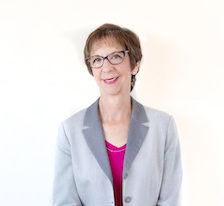The Network Approach to Wicked Problems
Author(s):
Mimi Lowi-Young

The COVID-19 pandemic poses a once in a century challenge, a test not only for public health and medical science, but for political leaders, economists, businesses, educators and social scientists, among others. In truth, it challenges all of us every day.
The pandemic is the very definition of a wicked problem—an issue that is multifaceted, pervasive, persistent and with no easy solution. Wicked problems demand a sophisticated response. I believe that a research network, a concept which brings together experts from a broad range of disciplines to work in synergistic tandem, is the best approach.
Canada is fortunate that the Chief Science Advisor to the federal government, Dr. Mona Nemer, sees the value in this model and mandated the creation of a network, CanCOVID, to expedite communication and collaboration between the scientific, healthcare and policy communities during the COVID-19 crisis. On behalf of the University of Toronto, Dr. Alex Mihailidis, Scientific Director of AGE-WELL, was brought on as a co-lead on the development, implementation and funding of CanCOVID, which is a crucial endeavour in tackling the massively complex challenges presented by COVID-19.
Let’s talk about what a network approach can accomplish and why it’s bound to have an impact. My experience as Chair of the AGE-WELL Board of Directors has taught me the value of research networks. As Canada’s technology and aging network, AGE-WELL’s mandate is to leverage technology and innovation to deal with another series of interlaced wicked problems: daily challenges that many older adults face that compromise their ability to remain independent in their own homes; growing rates of dementia; and a long-term care system under tremendous stress.
AGE-WELL has brought together a diverse array of stakeholders: government, industry, researchers, not-for-profits, trainees, older people and caregivers. Through years of hard work and commitment from our partners, the network has grown into something that is far greater than the sum of its parts. AGE-WELL is more than a funder of research, although that is an important part of its mission; it has built a community of collaborative practice that takes great ideas and turns them into real-world products and services, relying heavily on the involvement of older adults and caregivers.
Its approach is both top down and bottom up. The network helps to define the problems that it wants to solve and provides resources. It then listens assiduously to those involved in the problem-solving—academics, industry, community organizations, policy makers and the people directly facing the problem.
By leveraging the breadth of expertise throughout the network, we identify entrepreneurs and researchers who have ideas with real potential for success—and help them get their solutions into the hands of people who need them. Recently, through consultation with 1,000 stakeholders and a review of federal and provincial policy priorities, our network identified eight “Challenge Areas” designed to move the dial when it comes to supporting seniors and caregivers in Canada. Most qualify as wicked problems that require both innovation and the deployment of real-world solutions.
One Challenge Area, called “Staying Connected,” emerged as a pressing issue during the pandemic. With lockdowns in place, older adults suddenly found themselves physically isolated. Whether living at home or in care facilities, the lack of contact with loved ones proved devastating for many older Canadians. AGE-WELL is addressing problems of social isolation and loneliness through technologies like FamliNet, a platform that allows seniors with few computer skills to connect with family and friends. Smart homes, wearable therapies, virtual care—these are other areas of activity that address challenges now and in the future.
Just as the “AGE-WELL way” has brought everyone together to respond to the needs of an aging population, CanCOVID has allowed Canada to swiftly and organically bring together the research community, avoiding silos that could impair progress. Within a matter of a few weeks, there were 3,000 people from across the country and across disciplines talking to each other and united in the cause of finding solutions.
What AGE-WELL has demonstrated and what I believe will be reinforced by CanCOVID is that networks work. They bring together diverse experts who might not otherwise have met and give them a framework to collectively find solutions to wicked problems.

